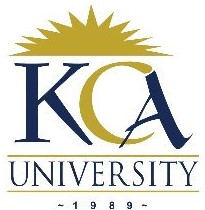 UNIVERSITY EXAMINATIONS: 2017/2018
UNIVERSITY EXAMINATIONS: 2017/2018
EXAMINATION FOR THE DEGREE OF BACHELOR OF SCIENCE IN
INFORMATION TECHNOLOGY /BACHELOR OF BUSINESS
INFORMATION TECHNOLOGY
BIT 1305/BBIT 103: COMPUTER NETWORKS/ COMPUTER
NETWORKS AND MANAGEMENT
FULL TIME/PART TIME/DISTANCE LEARNING
DATE: AUGUST, 2018 TIME: 2 HOURS
INSTRUCTIONS: Answer Question One & ANY OTHER TWO questions.
QUESTION ONE [30 MARKS]
a) State two advantages and two disadvantages of peer-to-peer networks. 4 Marks
b) The network infrastructure contains three categories of network components namely: devices,
media and services. Discuss in detail the role of each of these components. 6 Marks
c) Intermediary devices connect the individual end devices to the network and can connect
multiple individual networks to form an internetwork. State any five functions performed
by intermediary devices. 5 Marks
d) Explain briefly three specific features of WANs. 3 Marks
e) Discuss any three common connection options for small office and home office users to
connect to the Internet. 6 Marks
f) Discuss fault tolerance, scalability and Quality of Service (QoS) in terms of how they
affect converged networks architecture. 6 Marks
QUESTION TWO [20 MARKS]
a) As new technologies and end user devices come to market, businesses and consumers
must continue to adjust to this ever-changing environment. The role of the network is
transforming to enable the connections between people, devices, and information. In this
regard, discuss the following:
(i) Bring Your Own Device (BYOD) 2 Marks
(ii) Online collaboration. 2 Marks
(iii) Video communications 2 Marks
(iv) Cloud computing 2 Marks
b) Discuss the following in relation to switches:
(i) Port security 2 Marks
(ii) Power over Ethernet (PoE) 2 Marks
(iii) Link aggregation 2 Marks
c) UTP cable does not use shielding to counter the effects of EMI and RFI. How do they
counter this? 2 Marks
d) What combination of factors determine the practical bandwidth of a network?
4 Marks
QUESTION THREE [20 MARKS]
a) Explain each of the Ethernet II frame fields. 6 Marks
b) Explain briefly the following switch operations:
(i) Fast-Forward Switching 2 Marks
(ii) Fragment Free Switching 2 Marks
(iii) Store-and-forward switching 2 Marks
c) When you are selecting a switch, you need to decide between fixed configuration or
modular configuration, and stackable or non-stackable. Discuss:
(i) Fixed Configuration Switches 2 Marks
(ii) Modular Switches 2 Marks
(iii) Stackable Switches 2 Marks
d) Differentiate between symmetric switching and asymmetric switching. 2 Marks
QUESTION FOUR [20 MARKS]
a) Explain any six benefits of the OSI Model 6 Marks
b) Describe the half-duplex (CSMA/CD) access method. 5Marks
c) Explain briefly three functions of routers 3 Marks
d) State the functions of any six of the most widely known and implemented TCP/IP
application layer protocols. 6 Marks
QUESTION FIVE [20 MARKS]
a) You work for a company is considering purchasing a new financial software application
from XYZ Software Development Company. The XYZ software company has decided to
come in and let you install a demo copy of their software so that you can test it in your
network with a few hosts. The server and the hosts that will connect to this server will
need a 10Mbps connection. Your company is currently using a hub. Your company has
decided to use this new financial software application. However when you ran your
packet analyzer you noticed the rest of the hosts on your network that are not using this
application have a bandwidth problem with the new financial system installed. Since your
company has decided to use this new application they would like you to resolve the
bandwidth problem.
(i) List four reasons why bandwidth is important in computer networks
4 Marks
(ii) Explain the benefits of replacing the hub with a switch. 3 Marks
(iii) Explain the benefits of replacing a hub with a bridge. 2 Marks
(iv) Explain what you would consider as the most economical decision you would
implement for resolving the problem in your company. 1 Mark
b) State any four functions of a Web browser 4 Marks
c) Describe the steps a client goes through to get an IP address from a DHCP server
6 Marks
